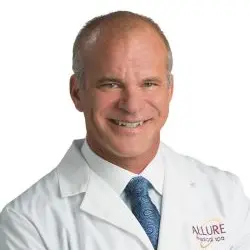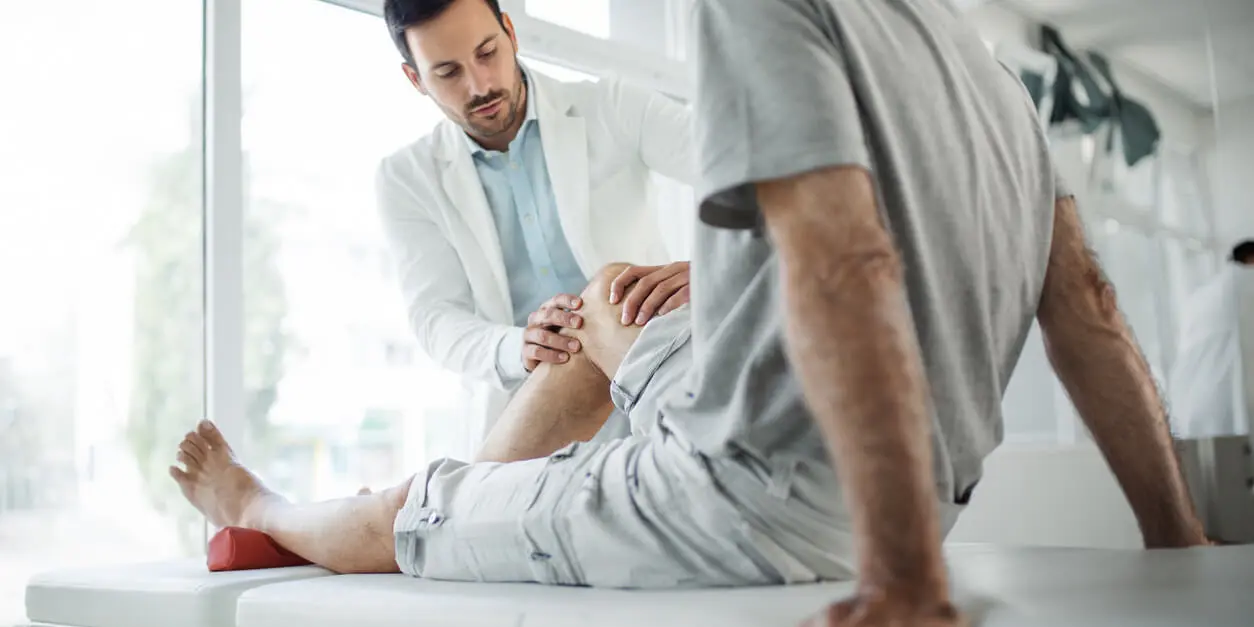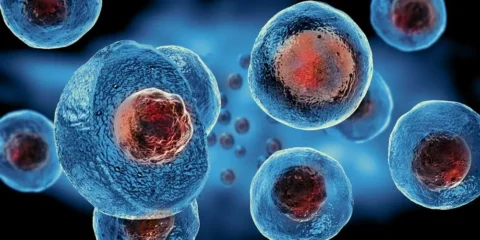Platelet Rich Plasma (PRP) for knee arthritis as part of a regenerative approach to knee pain.
And:
Knee pain due to arthritis is a common problem, but did you know knee arthritis can shorten your lifespan (if untreated)?
Degenerative Joint Disease (DJD) affects millions of Americans, and the treatments have ranged from ignoring the condition to pain pills, steroid injections, and, ultimately, joint replacement surgery.In my book on the subject, we reviewed the enormous economic impact of the current traditional medicine treatment model, which worsens yearly.
While pain pills work, they have complications when used long-term (including addiction).While steroids work, they accelerate the worsening of the arthritis and offer no benefit in the long run (other than hastening the need for joint replacement surgery).While joint replacement works, significant complications can occur, and the artificial joints are not designed to last forever.
That leads us to the interest in regenerative medicine , where the joints heal themselves (with a bit of help).Our bodies self-healing is not a new concept.Think of a cut, a broken bone, a twisted ankle, and a sore throat.We are used to thinking of regeneration when it comes to acute injury or assaults to our bodies.
When we talk about regenerative medicine, we are generally talking about using the body’s natural healing abilities to heal chronic diseases, such as arthritis.Since this doesn’t happen automatically, scientists have found ways to coach tissues to self-heal.
There’s a lot of excitement about stem cells, and while that is a valid reason for excitement, we are going to discuss platelet-rich plasma (PRP).Platelets are the cells in your blood that cause bleeding to stop.And until a few decades ago, it was assumed that platelets principal function was to clot blood so when you have a cut, bleeding stops.But platelets are not just blood stoppers, they are loaded with growth factors that set off a cascade of events that cause your body to heal itself after the blood has been stopped after an injury.
Let’s get back to lifespan:
It is estimated that having degenerative disease in a joint such as the knee shortens quality of lifespan by 1.8-3.5 years.This is largely due to the decrease of function or activity that goes along with major joint pain.
The traditional treatments (steroid injection, hyaluronic acid injection, pain pills) do little to meaningfully improve function in individuals suffering from joint pain.This has led to the exploration of PRP as an alternative to current therapies.
PRP is injected into the joint with the intention of releasing growth factors and leading to some degree of regeneration of tissues, or at least reducing the pain associated with arthritis.There are no drug companies that sell PRP because it is from your own body, and this leads to the “controversy” around PRP therapy.
Most medical research is supported by Big Pharma or the NIH (National Institutes of Health).If PRP were a drug that could make billions of dollars for shareholders, you would have already heard about it as an everyday word.In spite of that limitation, hundreds of studies evaluating the effectiveness of PRP for arthritis have been performed and published.
The studies overwhelmingly show what we see in clinical practice.PRP is effective for reducing symptoms of arthritis, is superior to other traditional nonsurgical options, and has a reasonably long period of effectiveness.Most of the studies focused on mild to moderate degree of arthritis.Severe arthritis is not expected to show a significant benefit (and we should be thinking of stem cell for this more advanced condition).
Back to the controversy.There is no doubt that surgically removing the joint will reduce pain in that joint.The metal or ceramic the joint is replaced with may squeak or click, but you will no longer have the arthritis.
I am not opposed to joint replacement.But I am in favor of trying to get the joint to improve before jumping to surgery.
Personal experience with PRP
We have been using PRP in our clinical practice since 2011.I was our first patient.In 2010 I tore my subscapularis tendon (part of the rotator cuff) 70% and was scheduled to have surgery to repair the rotator cuff.The surgeon was going to do an open repair, shorten my bicep tendon and break off some bone.Recovery time…6 weeks.I’ve seen men my age with those contraptions to immobilize the shoulder after rotator cuff repair.I wasn’t ready for that, but the injury was limiting my ability to do my job.Performing surgery was almost impossible without pain, which led me to limit the cases I could do.
I had heard about PRP for rotator cuff injuries being done on athletes (who cannot afford to be off of work either) and it was very new.We bought the machine to make the PRP, and with the help of an ultrasound technician skilled in musculoskeletalimaging and an orthopedic surgeon who was very interested in PRP joint injections, we figured out how to do it.At the time, it was too new, so still in the “figure it out” phase.
We did two sessions with a needle injecting PRP from my own blood into my shoulder.The first time we did it, I could see the tear on ultrasound and the PRP infusing into the tear.The second session, 2 months later, the tear couldn’t be seen, but it was assumed two sessions should be done to get better outcomes.
12 years later (now) I have lived without any rotator cuff pain or limitations.No further sessions were done beyond the first two in 2011.I saw the orthopedic surgeon (who was scheduled to do my surgery, not the one who injected the PRP) a few times since 2011 and each time he pointed out that PRP wouldn’t work, or wouldn’t last, and finally, maybe my healing had nothing to do with the PRP.Willful blindness is common in medicine where doctors are afraid newer treatments will not create the same value to their practice as older treatments did.
Since 2011, we have evolved and adapted to use PRP as guided by medical studies and breakthroughs.PRP aids wound healing, so we use it for cosmetic surgery wounds.PRP enhances recovery and effectiveness for a variety of cosmetic laser treatments, so we use PRP after Fraxel® and other resurfacing treatments.We also use PRP for the treatment of minor to moderate arthritis as well as a variety of tendon and ligament conditions.Believe it or not, PRP is even used to treat erectile dysfunction.
In summary , if you have arthritis and are putting off doing something about it, keep in mind that there are nonsurgical options.Your insurance will not cover PRP for joint injections, and you will have to pay for it.The way I think of it in light of the 1.8-3.5 quality life year risk by not treating arthritis is:”What do you value most, your life or your money?”.
Dr. Charles Mok
Reasons why osteoarthritis predicts
mortality: path analysis within a Cox
proportional hazards model.Wilkie R, et al. RMD Open 2019;5:e001048. doi:10.1136/rmdopen-2019-001048
Impact of Obesity and Knee Osteoarthritis on Morbidity and
Mortality in Older Americans.Ann Intern Med. 2011 February 15; 154(4): 217–226.doi:10.1059/0003-4819-154-4-201102150-00001.






